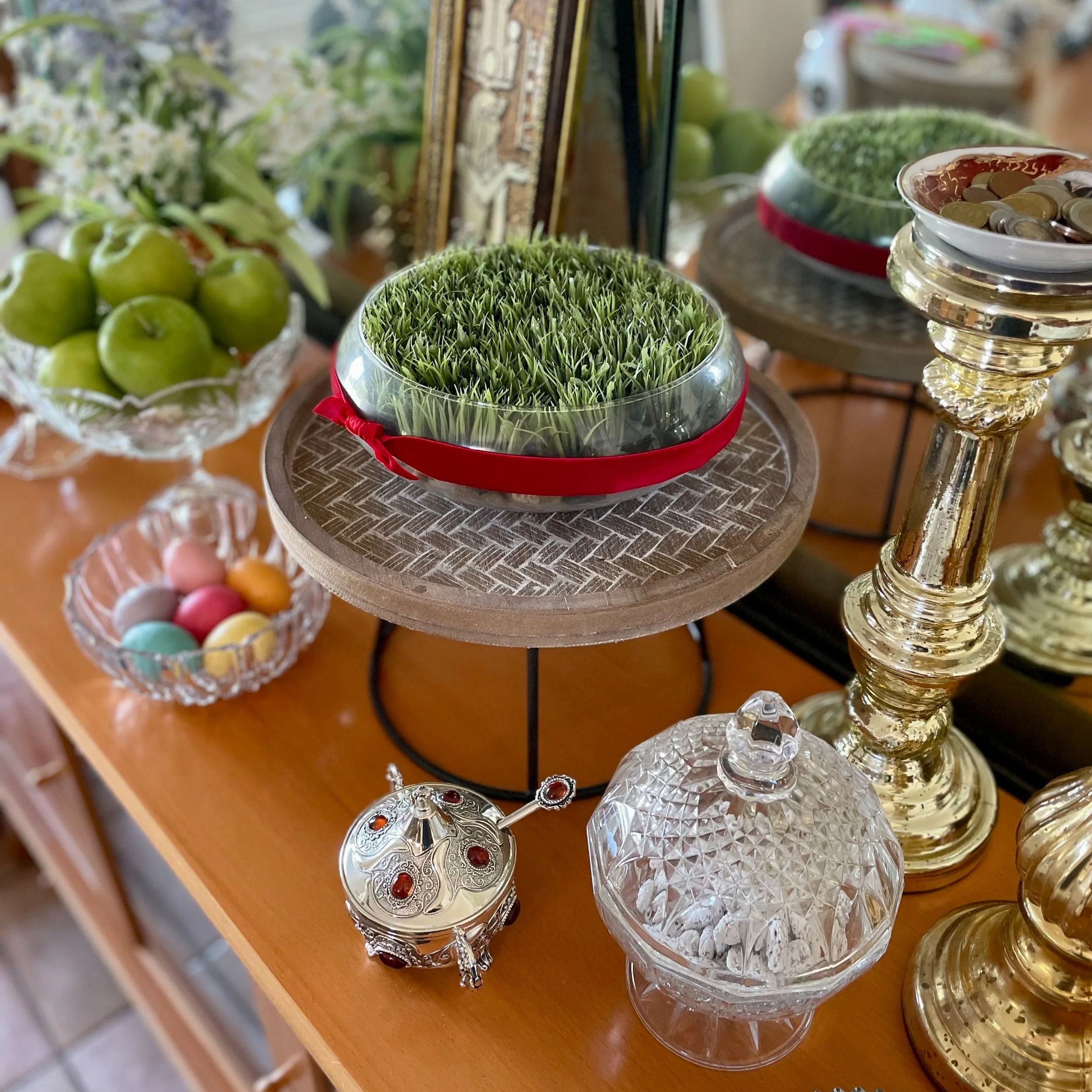Persian New Year
As Nowruz, the Persian New Year, approaches, one of the most cherished traditions is setting up the Haftsin table. Among the symbolic items on the table, sabzi—freshly grown wheat or lentil sprouts—represents renewal, rebirth, and the vitality of spring. For the last few years, I’ve been using a fake sabzi that I made from plastic grass (lol), but growing sabzi from scratch is a meaningful and easy way to participate in the festivities.
Here’s a step-by-step guide to growing sabzi for Nowruz:
Step 1: Gather Your Supplies
You’ll need:
Seeds: Traditionally, wheat, barley, lentil, or mung bean seeds are used. Wheat and lentils sprout more quickly, making them great options.
A shallow dish or tray: Choose a container wide enough to spread your seeds thinly for even sprouting.
Water: Keep a spray bottle or small cup handy to keep the seeds moist during the growing process.
A sunny spot: Place your seeds somewhere they’ll get indirect sunlight, like a windowsill.
Step 2: Soak Your Seeds
To start, you’ll need to soak the seeds for about 24 hours.
Rinse your seeds thoroughly to remove any dust.
Place the seeds in a bowl and cover them with water. Let them soak overnight (12-24 hours). This helps activate the germination process.
Step 3: Prepare the Growing Dish
Once the seeds have soaked, drain them and spread them evenly over your shallow dish. Avoid layering them too thickly—1-2 layers of seeds are ideal for optimal sprouting.
You can line the dish with a thin layer of cotton or damp paper towels to help retain moisture during the growing process.
Step 4: Water Regularly
Keep your seeds moist by misting them lightly with water a couple of times each day. Make sure they don’t dry out, but avoid soaking them in too much water, which can cause the seeds to mold. A spray bottle works best for this.
Step 5: Wait and Watch Them Grow
Within a few days, you’ll see the seeds begin to sprout! They’ll start off as tiny green shoots, and over the next week or so, they’ll grow into beautiful, bright green sprouts. This process usually takes 7-10 days, depending on the type of seeds and the environment.
Step 6: Shape and Trim the Sabzi
Once your sabzi has grown tall enough (usually about 3-5 inches), you can gently trim the edges to give it a neat and uniform look. Some people like to shape the sprouts into a circle or square for a polished presentation on the Haftsin table.
Step 7: Display on Your Haftsin Table
Your freshly grown sabzi will make a vibrant addition to your Haftsin table, symbolizing the rebirth and growth of spring. Be sure to place it alongside other symbolic items like senjed (dried fruit), seer (garlic), and sumac, each representing different virtues for the new year.
Growing sabzi for Nowruz is a wonderful way to connect with the tradition of the Haftsin table and embrace the renewal that the Persian New Year celebrates. It’s simple, fun, and adds a fresh, personal touch to your festive display. Whether you’re a beginner or seasoned gardener, growing your sabzi will make your Nowruz celebrations even more special!
Happy Nowruz!







